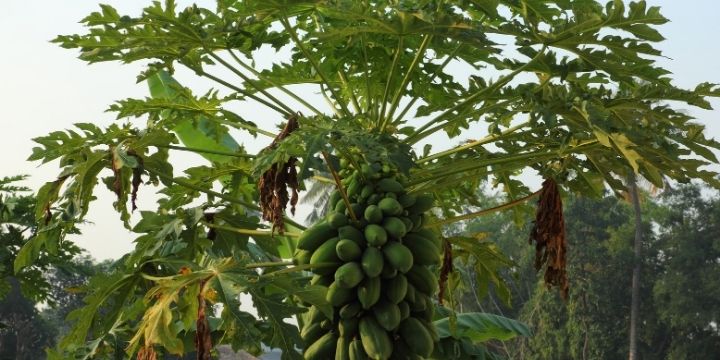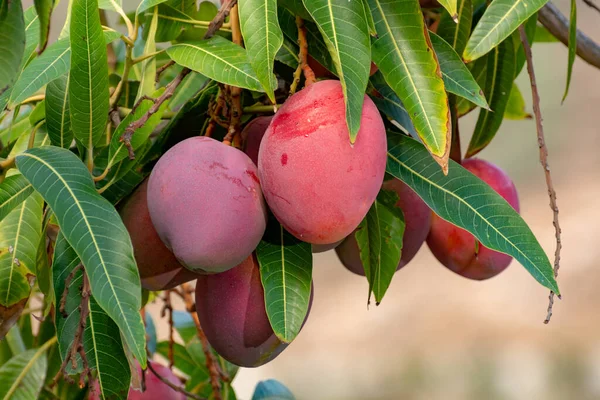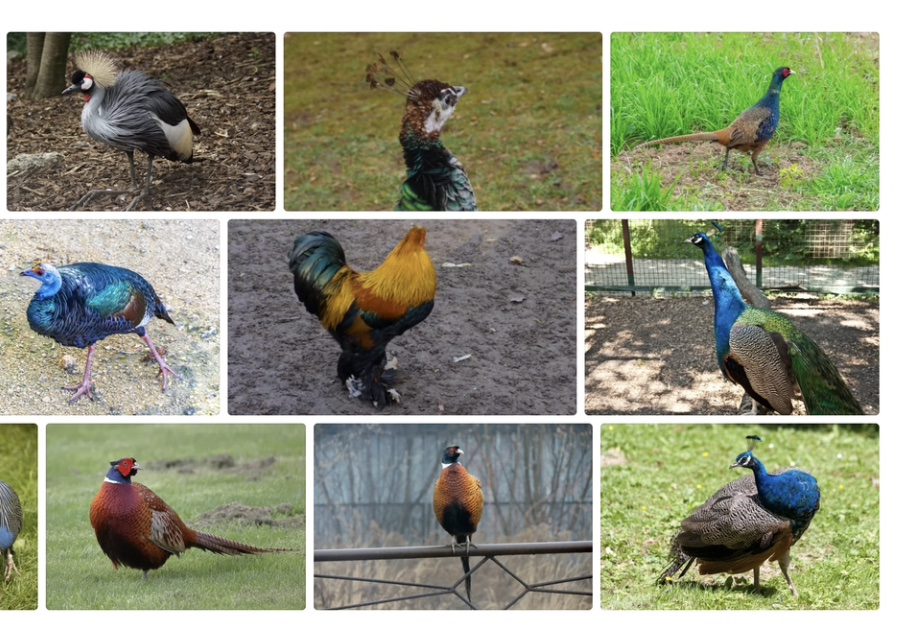Pawpaw, also known as papaya, is a tropical fruit that is popular in Kenya. The fruit is known for its sweet taste and high nutritional value. In recent years, there has been an increasing interest in pawpaw farming in Kenya, as the demand for the fruit continues to grow. In this blog post, we will explore the profitability of pawpaw farming in Kenya. We will cover the climate and soil requirements, planting and harvesting methods, pawpaw varieties grown in Kenya, as well as the costs, profits, and challenges of pawpaw farming in Kenya.
Climate and Soil Requirements
Pawpaw is a tropical fruit that requires a warm and humid climate to grow. It is well suited to Kenya’s tropical climate, which is characterized by high temperatures and high humidity. The ideal temperature range for pawpaw farming is between 25-30°C. Pawpaw requires well-drained soils that are rich in organic matter and have a pH between 6-7. The ideal soil type for pawpaw farming is sandy loam or loam soils.
Best Areas to Grow:
Papaya grows best in areas with high temperatures and plenty of rainfall. Coastal regions and the western side of Kenya are ideal for growing papaya. These areas have a conducive climate for the growth and development of papaya plants. The high temperatures and adequate rainfall provide the perfect conditions for the growth of papaya plants.
Varieties
The most common pawpaw varieties grown in Kenya are the Solo and the Sunrise. Both of these varieties are known for their high yield and disease resistance. The Solo variety is a dwarf variety that grows to a height of about 3-4 meters, while the Sunrise variety is a tall variety that grows to a height of about 6-8 meters.
How to Grow papaya in Kenya
growing papaya in Kenya requires proper land preparation, irrigation, spacing and planting, weeding, soil fertility management, pest and disease management. The post will also cover harvesting and quality control, value addition and marketing, intercropping and tips for success.
Land Preparation:
The land should be cleared of all weeds and debris, and should be ploughed and harrowed to ensure a fine seedbed. The pH level of the soil should be around 6-7. Proper land preparation is crucial for the growth and development of papaya plants. By clearing the land of weeds and debris, farmers can ensure that the papaya plants have enough space to grow. Additionally, ploughing and harrowing the land helps to create a fine seedbed, which is essential for the growth of papaya plants.
Spacing and Planting:
Papaya plants should be spaced at least 3 meters apart. The best time to plant papaya is during the rainy season, when the soil is moist. Proper spacing and planting is essential for the growth and development of papaya plants. By spacing the plants at least 3 meters apart, farmers can ensure that the plants have enough space to grow and develop properly. Additionally, planting during the rainy season ensures that the soil is moist, which is essential for the growth of papaya plants.
Irrigation:
Papaya plants need to be watered regularly, especially during dry spells. Drip irrigation is the most efficient method of irrigation for papaya. Adequate irrigation is essential for the growth and development of papaya plants. Drip irrigation is the most efficient method of irrigation for papaya as it ensures that water is delivered directly to the roots of the plants. This helps to conserve water and ensures that the plants receive the right amount of water at the right time.
Weeding:
Weeds should be removed regularly to prevent competition for nutrients and water. Weeding is an essential part of papaya farming as it helps to prevent competition for nutrients and water. By removing weeds regularly, farmers can ensure that the papaya plants receive the nutrients and water they need to grow and develop properly.
Soil Fertility Management:
Papaya plants require regular applications of fertilizer to ensure optimal growth and fruit production. Organic fertilizers such as chicken manure or compost are recommended. Proper soil fertility management is essential for the growth and development of papaya plants. By applying fertilizers regularly, farmers can ensure that the plants receive the nutrients they need to grow and develop properly. Organic fertilizers such as chicken manure or compost are recommended as they are natural and safe for the environment.
Pest and Disease Management:
Papaya plants are susceptible to pests and diseases such as aphids, fruit flies, and powdery mildew. These can be controlled through the use of pesticides and by maintaining good sanitation practices. Pest and disease management is an essential part of papaya farming. By controlling pests and diseases, farmers can ensure that their crops are healthy and productive. Pesticides can be used to control pests and diseases, however, farmers should be aware of the potential hazards and should use them with caution. Additionally, maintaining good sanitation practices can help to prevent the spread of pests and diseases.
Harvesting and Quality Control:
Papaya should be harvested when they are fully ripe, typically when the skin turns yellow. The fruits should be handled carefully to avoid bruising. Proper harvesting and quality control is essential for the growth and development of papaya. By harvesting the fruits when they are fully ripe, farmers can ensure that the fruits are of high quality and have the best taste. Additionally, the fruits should be handled carefully to avoid bruising, which can affect the quality and shelf life of the fruits.
Value Addition and Marketing:
Papaya can be sold fresh or processed into products such as juice and jam. It is also possible to export papaya to other countries. Value addition and marketing are essential for the growth and development of papaya farming. By adding value to the fruits, farmers can increase their income and ensure that their crops are profitable. Additionally, exporting papaya to other countries can help to increase demand for the fruits and increase the income of farmers.
Intercropping:
Papaya can be intercropped with other crops such as bananas or coffee. Intercropping is an excellent way to increase the productivity of a piece of land. By intercropping papaya with other crops, farmers can ensure that the land is used to its full potential and that the crops complement each other. Additionally, intercropping can help to reduce the risk of pest and disease outbreaks.
Costs and Profits
The initial investment costs for pawpaw farming in Kenya can vary depending on the scale of the operation and the equipment used. The main costs include land, seedlings, equipment, and labor. The cost of land varies depending on location, but it typically ranges from KES 20,000 to KES 50,000 per acre. The cost of seedlings can also vary depending on the variety and the quantity needed, but it typically ranges from KES 1,000 to KES 3,000 per acre. Equipment costs can include things such as a plow, harrow, and irrigation system, and can range from KES 30,000 to KES 50,000. Labor costs will depend on the number of workers needed, and can range from KES 10,000 to KES 20,000 per acre.
Operating costs for pawpaw farming in Kenya include fertilizer, pesticides, and irrigation. The cost of fertilizer can range from KES 5,000 to KES 10,000 per acre, while the cost of pesticides can range from KES 2,000 to KES 5,000 per acre. Irrigation costs will depend on the type of irrigation system used, but can range from KES 15,000 to KES 30,000 per acre.
The current market prices for pawpaw in Kenya range from KES 50 to KES 100 per kilo. The potential profits and returns on investment for pawpaw farming in Kenya can be quite high, with farmers earning a profit of KES 100,000 to KES 250,000 per acre.
Challenges and Risks
Like any farming venture, pawpaw farming in Kenya comes with its own set of challenges and risks.
Pest and disease management are a major concern, with pests such as fruit flies, mealybugs, and whiteflies posing a significant threat to the crop. Weather and climate risks, such as floods and droughts, can also negatively impact the crop. Market fluctuations and competition from other farmers and imported products can also affect the profitability of pawpaw farming in Kenya.
To mitigate these risks, farmers can implement crop rotation, use organic farming methods, and invest in pest and disease management techniques. Additionally, farmers can diversify their crops to reduce their reliance on a single crop. In addition, farmers can also invest in post-harvest handling, such as proper packaging, to ensure that the fruits reach the market in good condition and fetch higher prices.
Tips for Success:
To ensure a successful papaya crop, farmers should choose the right variety of papaya for their area, provide proper care and management, and be aware of the market conditions for papaya. Choosing the right variety of papaya for the area is essential for the growth and development of papaya. Additionally, providing proper care and management, and being aware of the market conditions for papaya can help to ensure that the crop is successful and profitable.
Conclusion
In conclusion, pawpaw farming in Kenya is a profitable venture for farmers. Pawpaw is a popular fruit that is in high demand in the Kenyan market, and the costs and profits of pawpaw farming in Kenya are favorable. While there are challenges and risks involved, these can be mitigated with proper planning and management. For those interested in starting a pawpaw farming business in Kenya, it is important to research the best practices and seek advice from experienced farmers. The future outlook for pawpaw farming in Kenya is positive, with increasing demand and potential for growth in the industry.
References and Additional Resources



